RAPHANUS
Raphanus
L., Sp. Pl. 669. 1753; Gen. Pl. ed. 5: 300. 1754; Benth. & Hook. f., Gen. Pl. 1(1):101.1862; Hook. f. & Ander. in Hook. f., Fl. Brit. Ind. 1: 166. 1875; Schulz in Engl. & Prantl, Pflanzenfam. ed. 2, 17 b: 347. 1936; Fl. China @ eFloras.org 8: 25; Warwick, Fl. North Amer. @ eFloras.org 7: 438; Fl. Pak. @ eFloras.org
Annual to perennial herbs, sometimes with tuberous tap root. Stem erect, branched, usually scabrous or hispid below with simple hairs. Leaves lyrate-pinnatifid; uppermost often simply toothed. Racemes corymbose becoming lax in fruit, ebracteate. Flowers large, usually white or violet, rarely yellowish, pedicellate; fruiting pedicels divaricate or reflexed. Sepals 4, erect, oblong, subequal, obtuse, inner pair somewhat saccate at base. Petals 4, large, obovate, long clawed, often dark-veined. Stamens 6, strongly tetradynamous, filaments simple, linear; anthers oblong, obtuse. Nectar glands 4, minute, depressed, median pair subglobose or stalk-like or oblong. Ovary subulate, bi-articulated, lower part very short, sterile, upper long with 2-22 ovules; stigma small, capitate. Siliquae usually elongated, bi-articulated, lower part very short, inconspicuous, stalk-like, slender, seedless; upper part elongated, +/- constricted between the seeds and apex narrowing +/- into a seedless beak-like structure; fruit either indehiscent, cylindrical or break into 1-seeded units at maturity; septum complete in the short sterile lower part. Seeds spherical or ovoid, uniseriate, brownish.
One species
Raphanus raphanistrum subsp. sativus
Raphanus raphanistrum subsp. sativus
(L.) Domin, Beih. Bot. Centralbl. 26(2): 255. 1910; Raphanus raphanistrum var. sativus (L.) Beck, Fl. Nieder-Österreich 2: 500. 1892; Raphanus sativus L., Sp. Pl. 699. 1753; Hook. f. & Ander. in Hook. f., Fl. Brit. Ind. 1: 166. 1875; Kaur & Sharma, Fl. Sirmaur 144. 2004; Singh & Sharma, Fl. Chamba Distt. 165. 2006; Fl. China @ eFloras.org 8: 25; Fl. North Amer. @ eFloras.org 7: 439.
Annual or biennial herbs, 10-100(-130) cm tall, glabrous, scabrous or hispid. Roots fleshy, white, pink or red, linear, fusiform, oblong (or globose). Stems simple or branched. Basal leaves with petiole 1-10(-30) cm long; leaf blade scaberulous, especially lower side, oblong, obovate, oblanceolate in outline, up to 35 cm x 8 cm (up to 60 cm x 20 cm); lyrate or pinnatisect, margin dentate, apex obtuse or acute; lateral lobes 3-9 on each side of midvein, oblong or ovate, to 10 cm x 5 cm; middle cauline leaves similar to basal leaves in form but smaller; uppermost cauline leaves subsessile, often undivided, dentate. Inflorescence panicle of corymbose racemes; fruiting pedicels divaricate or ascending, up to 4 cm long. Flowers 1.5-2.0 cm long, ca. 2.5 cm across, white or pink; pedicels 6-15 mm long. Sepals 4, free, 7-12 mm long, 1-2 mm wide, narrowly oblong, few trichomes in upper part of sepals, green, often red tinged. Petals 4, free, white, pink or purple, veins prominent, broadly obovate, ca. 10 mm x 7 mm; claw prominent, ca. 10 mm long. Stamens 6, tetradynamous, longer stamens 10-11 mm long, shorter 8-9 mm long; anthers ca. 3 mm long, oblong, obtuse, sagitate at base. Nectaries 2, median subglobose or oblong; lateral nectaries absent. Ovary subulate, ca. 8 mm long (nearly equal to sepals); bi-articulated; lower part ca. 1 mm long sterile; middle part, ca. 3.5 mm long, with ca. 5-6 ovules; upper part, ca. 3.5 mm long, elongated beak like, seedless; stigma small, capitate. Siliculae elongated, articulated at base; lower part very short, inconspicuous, stalk like, slender, seedless, 1-1.5 mm long, middle part 3-8.5 cm long, elongated, cylindrical terete, +/- constricted between the seeds, 6-14 seeds, complete septa in between the seeds; upper part narrowing into seedless beak like structure, 2.5-7.0 cm long; indehiscent. Septum complete in short sterile part. Seeds spherical or ovoid, 2.5-4 mm in diameter, uniseriate, brown.
Common Names: Radish; Mooli, Moongre (Hindi)
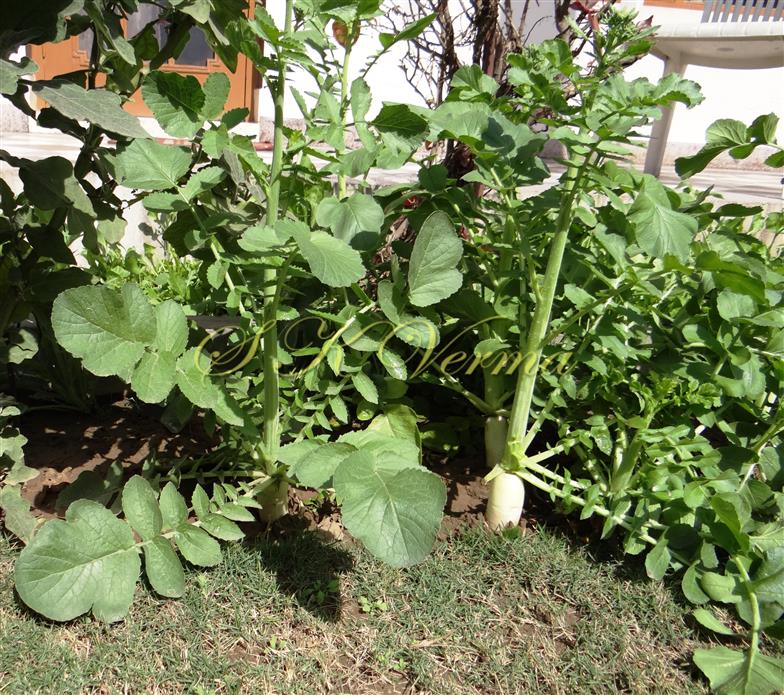
 -DSC03055.jpg)
-DSC03189.jpg)
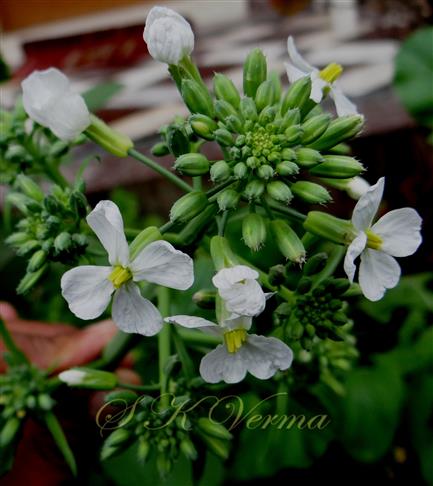
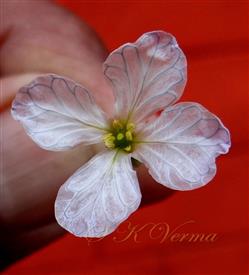
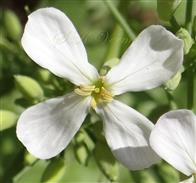
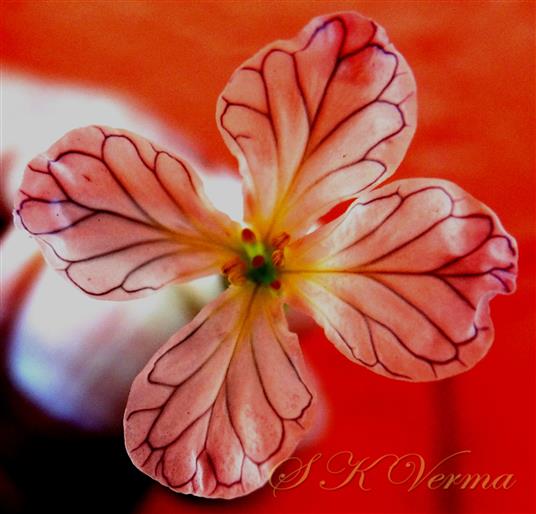
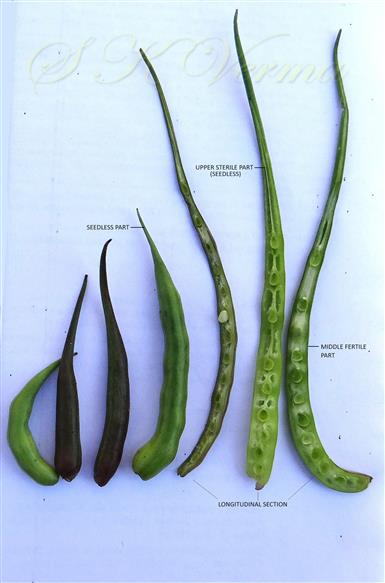
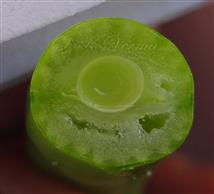
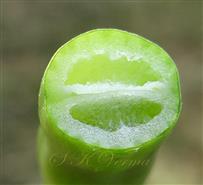


 -DSC03055.jpg)
-DSC03189.jpg)






